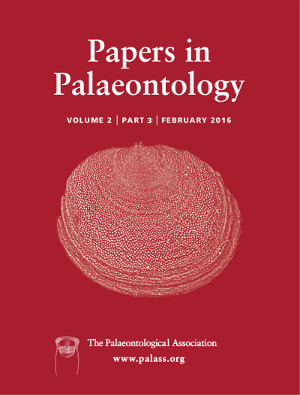Reg. Charity No. 1168330

The late Cisuralian (Artinskian–Kungurian) is a key time interval for Permian tetrapod evolution. In all the main low‐latitude Pangean sites, the fossil footprint record clearly shows a diversification and dispersal of non‐synapsid amniote tracks compared to the early Cisuralian (Asselian–Sakmarian). However, data on latest Cisuralian (i.e. late Kungurian) sites are quite fragmentary. A new ichnotaxonomic study was carried out in the central part of the Orobic Basin, where the highly‐fossiliferous Pizzo del Diavolo formation crops out and can potentially cover this gap in knowledge. The following tetrapod ichnogenera were identified: Amphisauropus, Batrachichnus, cf. Dimetropus, Dromopus, Erpetopus, Hyloidichnus, Limnopus, cf. Merifontichnus and Varanopus; they can be attributed to seymouriamorph and temnospondyl amphibians; pelycosaur synapsids; and diapsid, parareptile and captorhinid reptiles. Dimetropus and Merifontichnus are identified for the first time in the Permian of Italy. The ichnoassociation, in agreement with the radiometric dating of the underlying Cabianca formation, suggests a late Kungurian (latest Cisuralian) age for the Pizzo del Diavolo formation. It includes the youngest and most diverse non‐synapsid amniote ichnofauna of the Cisuralian with five different ichnogenera and possibly six ichnospecies, and thus constitutes a key area for the study of eureptile and parareptile dispersal at low latitudes of Pangaea in the time span that immediately pre‐dates the first therapsid synapsid radiation.